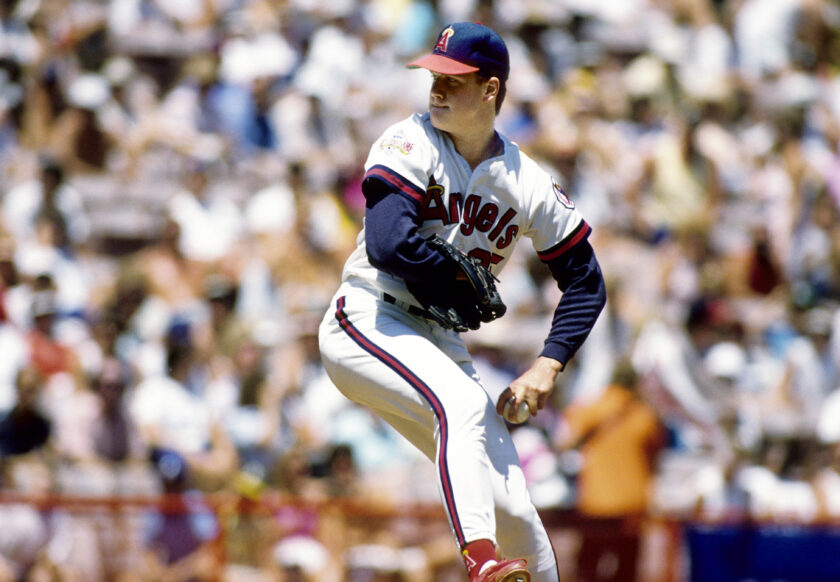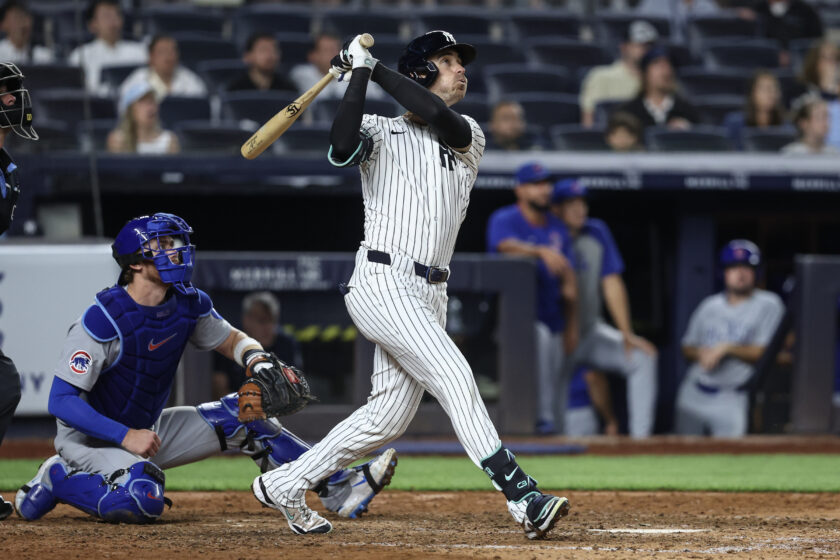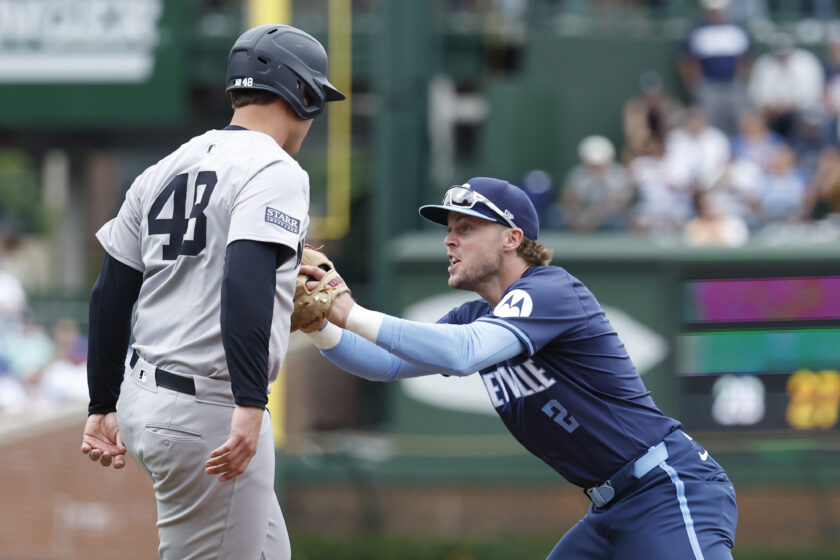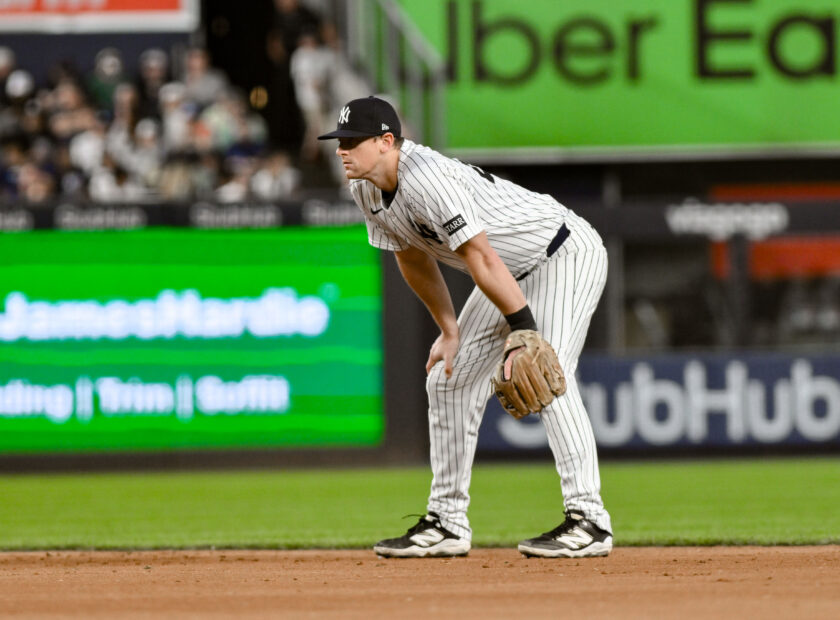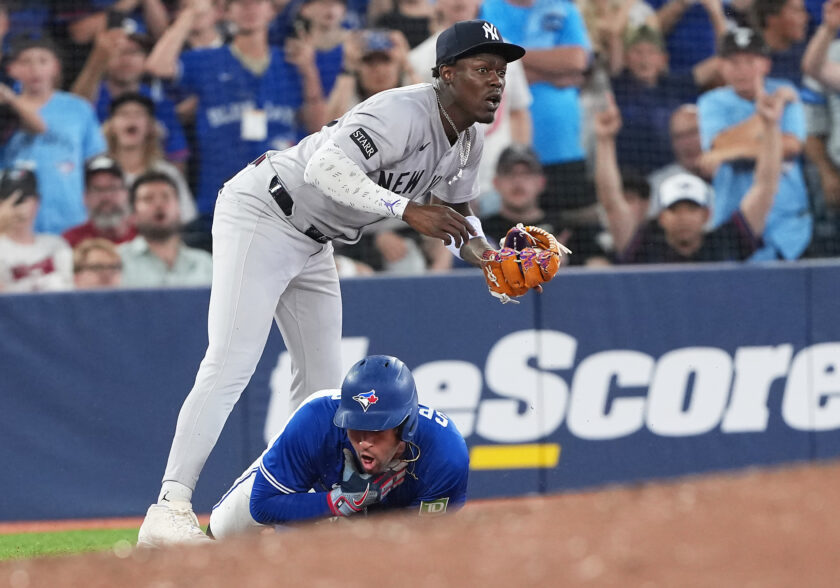Tyler Austin’s New York Yankees roster spot is all but safe
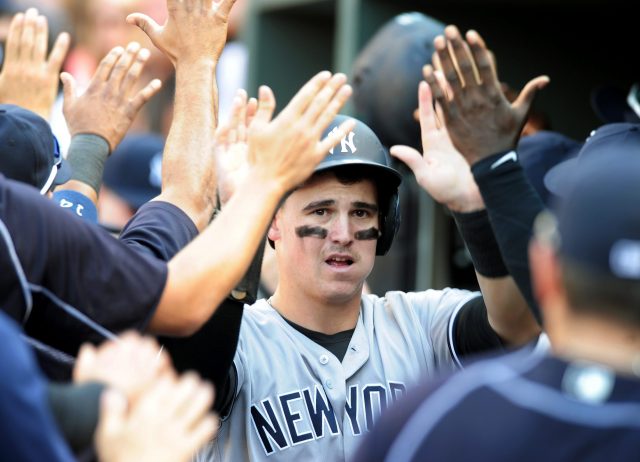
With Chris Carter in the picture for the New York Yankees, Tyler Austin has to prove himself if he wants to be in the Bronx this April.
[dropcap]F[/dropcap]rom the beginning of the offseason, we knew Tyler Austin would have to do massive damage before earning a spot as a New York Yankees starter in 2017.After all, New York’s roster is crowded with starters at all of the 25-year old’s positions.
[sc name=”Yankees Link Related” link=”elitesportsny.com/2017/02/10/new-york-yankees-release-seven-prospects-contracts/” text=”Yankees release seven minor league pitchers” ]
The recovering Greg Bird is the apparent lead dog at first base and on the other side of the infield is Chase Headley. The longest tenured Yankee (Brett Gardner) is manning left field while both Aaron Hicks and Aaron Judge sit ahead of him on the right field depth chart.
Even with the addition of designated hitter Matt Holliday, Austin was expected to be that big bat off the bench or a guy who could easily be thrown in a righty/lefty platoon with Bird.
Based on his brief vignette in 2016, the organization seemed perfectly comfortable with that arrangement.
[sc name=”Yankees Center” ]
In 31 games, Austin slashed .241/.300/.458 with an OPS of .758 and five home runs. Despite striking out in 43% of his total at-bats, New York’s 13th round pick of the 2010 draft went 6-for-12 with two home runs in his last five games. Against left-handers, he slashed .348/.444/.652 and maintained a 1.097 OPS.
What made Austin unique, however, was his clutch gene (highest clutch rating among Yankee hitters with at least 80 at-bats) along with the fact that all five of his home runs were smashed to the opposite field at an average of 375.8 feet, according to ESPN home run tracker.

Now, after general manager Brian Cashman made an unexpected move and inked Chris Carter to a one-year, $3.5 million contract, Austin’s competition for that job just got a whole lot more contentious.
Carter, who finished 2016 tied with Nolan Arenado for the National League lead in home runs (41), will fill out the second spot on the depth chart at first base and likely serve as the right-handed bat that would compliment Bird if manager Joe Girardi decided to band the two.
First off, comparing the two (Carter and Austin) against southpaws, one would scratch his/her head if Carter is the man they go to for a platoon.
In 2016, the 30-year old slashed .224/.338/.537 and hit just 12 of his 41 home runs off left-handers. As mentioned, Austin slashed .348/.444/.652 off them.
Plus, Carter’s clutch rating by FanGraphs was the tenth-worst in the NL last season while, as mentioned, Austin led the Yankees.
[sc name=”Yankees Link Related” link=”elitesportsny.com/2017/02/10/former-yankee-alex-rodriguez-appear-dick-stocktons-new-podcast/” text=”Former Yankee Alex Rodriguez opens up on Dick Stockton’s new podcast” ]
Getting back to Austin’s new 2017 outlook, though, if Austin has a tremendous spring and the Yankees are still looking for Aaron Judge to bud into the slugger he’s supposed to be, the 6-foot-7 righty could start his campaign in Triple-A. Or if Judge adjusts well, Austin is presumably the odd man out.[sc name=”Yankees Fanatics Right” ]
In the end, 2017 was supposed to be about assessing the young talent in the organization while ridding themselves of ugly contracts.
Cashman didn’t add the latter and $3.5 million for 41 home runs is an absolute steal, but every at-bat Carter takes is one taken away from seeing what a youngster could do.
I’m sure the Yankees won’t care if Carter’s power translates to Yankee Stadium as it’s supposed to, but keeping Austin in that insurance role while adding a starter or lefty reliever would boost the win column more than an investment in a slugger who maintained a negative win probability added in each of the past two seasons.
However, it was a low-risk signing that the Yankees probably didn’t want to pass up. Whether it was for the better or worse, Austin has to scratch, claw and “wow” his coaching staff if he wants to earn a major league roster spot on April 2.
[sc name=”Yankees Link Next” link=”elitesportsny.com/2017/02/10/clint-frazier-fit-new-york-yankees-2017-plans/” text=”Where does Clint Frazier fit into the New York Yankees’ 2017 plans?” ]Christian Kouroupakis covers the New York Yankees and is the Editorial Director for ESNY. Interact with him and view his daily work by “liking” his facebook page and follow him on Twitter. All statistics are courtesy of Baseball Reference.com unless otherwise noted. Don’t hesitate to shoot him an email with any questions, criticisms, or concerns.

